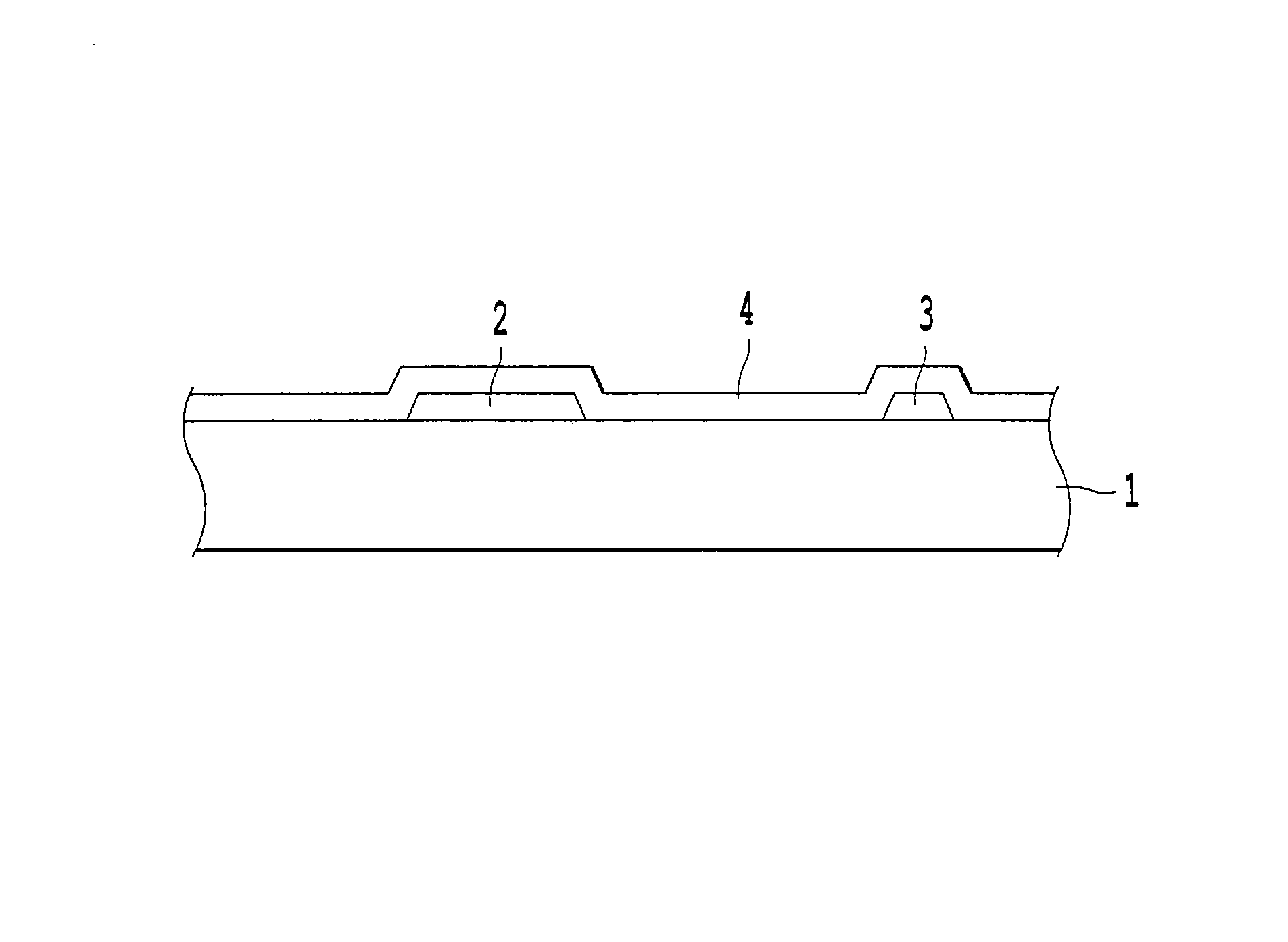Glass plate for display panels, process for producing it, and process for producing TFT panel
a technology of glass plate and display panel, which is applied in the direction of glass rolling apparatus, glass tempering apparatus, instruments, etc., can solve the problems of poor effect of alkali-free glass refining agent, deterioration of tft characteristics, and high production difficulty, and achieve excellent homogeneity and flatness, low degree of polishing of glass plate surface, and excellent productivity
- Summary
- Abstract
- Description
- Claims
- Application Information
AI Technical Summary
Benefits of technology
Problems solved by technology
Method used
Image
Examples
first embodiment
[0110]A glass plate for display panels, which comprises, as a glass matrix composition as represented by mass% based on oxide:
[0111]SiO2 65.0 to 73.0,
[0112]Al2O3 6.0 to 15.0,
[0113]B2O3 0 to 1.0,
[0114]MgO 5.0 to 9.0,
[0115]CaO 0 to less than 2.0,
[0116]SrO 0 to 1.0,
[0117]BaO 0 to 1.0,
[0118]MgO+CaO+SrO+BaO 6.5 to 10.0,
[0119]Li2O 0 to 1.0,
[0120]Na2O 3.0 to 17.0,
[0121]K2O 0 to 12.0, and
[0122]Li2O+Na2O+K2O 10.0 to 18.0,
and has a heat shrinkage (C) of at most 20 ppm and a density of at most 2.46 g / cm3.
[0123]The density is preferably at most 2.44 g / cm3, more preferably at most 2.42 g / cm3.
[0124]Since the glass plate of the present invention for display devices which has the above glass matrix composition in the first embodiment has a low density at a level of at most 2.46 g / cm3, the weight of the glass can be reduced, and breakage at a time of transportation can be suppressed.
second embodiment
[0125]A glass plate for display panels, which comprises, as a glass matrix composition as represented by mass % based on oxide:
[0126]SiO2 50.0 to 65.0,
[0127]Al2O3 15.0 to 20.0,
[0128]B2O3 0 to 1.0,
[0129]MgO 4.2 to 8.0,
[0130]CaO 2 to 6.0,
[0131]SrO 0 to 1.0,
[0132]BaO 0 to 1.0,
[0133]MgO+CaO+SrO+BaO 6.5 to 11.0,
[0134]Li2O 0 to 1.0,
[0135]Na2O 2.0 to 12.0,
[0136]K2O 0 to 12.0, and
[0137]Li2O+Na2O+K2O 8.0 to 17.0,
and has a heat shrinkage (C) of at most 20 ppm and an average coefficient of thermal expansion from 50 to 350° C. of at most 83×10−7 / ° C.
[0138]The average coefficient of thermal expansion is preferably at most 75×10−7 / ° C., more preferably at most 70×10−7 / ° C., further preferably at most 60×10−7 / ° C. Further, the average coefficient of thermal expansion is preferably at least 50×10−7 / ° C.
[0139]In the second embodiment of the glass plate of the present invention for display panels having such a glass matrix composition, since the average coefficient of thermal expansion from 50 to 350...
examples
[0155]Now, the present invention will be described in further detail with reference to Examples and Comparative Examples. However, it should be understood that the present invention is by no means restricted to such specific Examples.
[0156]Working Examples (Examples 1 to 13) for the glass plate of the present invention for display panels and Comparative Examples (Examples 14 to 16) are described.
[0157]Starting materials of the respective components were blended to achieve a desired composition as identified by mass % in Table 1. 0.1 part by mass of a sulfate as calculated as SO3 was added to 100 parts by mass of the starting materials of the above composition, and the mixture was heated by using a platinum crucible at a temperature of 1,600° C. for 3 hours and melted. For melting, a platinum stirrer was inserted, and stirring was carried out for one hour to homogenize glass. Then, the resulting molten glass was cast, formed into a plate shape and then annealed.
[0158]Of the glass thu...
PUM
| Property | Measurement | Unit |
|---|---|---|
| density | aaaaa | aaaaa |
| heat shrinkage | aaaaa | aaaaa |
| temperature | aaaaa | aaaaa |
Abstract
Description
Claims
Application Information
 Login to View More
Login to View More - R&D
- Intellectual Property
- Life Sciences
- Materials
- Tech Scout
- Unparalleled Data Quality
- Higher Quality Content
- 60% Fewer Hallucinations
Browse by: Latest US Patents, China's latest patents, Technical Efficacy Thesaurus, Application Domain, Technology Topic, Popular Technical Reports.
© 2025 PatSnap. All rights reserved.Legal|Privacy policy|Modern Slavery Act Transparency Statement|Sitemap|About US| Contact US: help@patsnap.com

